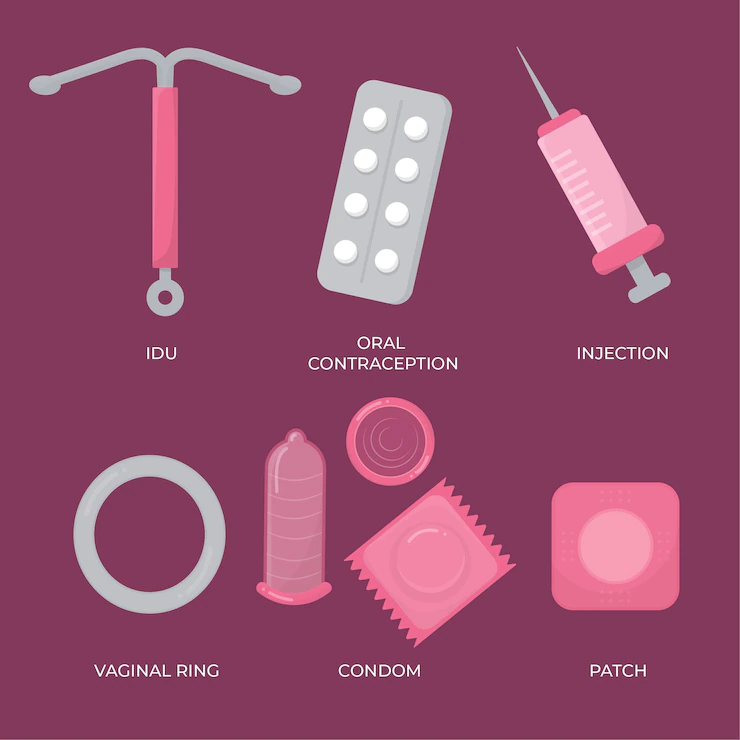Contraceptive implants and intrauterine devices (IUDs) are highly effective long-acting reversible contraceptive methods that provide effective pregnancy prevention for an extended period. These methods offer convenience and reliability, but it is important to understand their potential risks and benefits. In this article, we will explore the potential risks and benefits of contraceptive implants and IUDs to help individuals make informed decisions about their contraceptive choices.
Contraceptive Implants:
Contraceptive implants are small, flexible rods that are inserted under the skin of the upper arm. They release a progestin hormone, which prevents pregnancy by inhibiting ovulation, thickening cervical mucus, and thinning the lining of the uterus. Here are some potential risks and benefits of contraceptive implants:
Benefits:
- Highly Effective: Contraceptive implants are one of the most effective methods of birth control, with a success rate of over 99%. Once inserted, they provide continuous contraception for up to three to five years, depending on the specific brand.
- Long-Acting and Reversible: Implants offer long-term contraception without the need for daily or monthly administration. They can be easily removed by a healthcare professional if desired, and fertility typically returns quickly after removal.
- Convenience and Privacy: Once inserted, contraceptive implants require minimal maintenance and are not easily noticeable. They provide a discreet and convenient contraceptive option for individuals who prefer privacy.
Risks:
- Side Effects: Common side effects of contraceptive implants may include irregular bleeding, changes in menstrual patterns, headaches, breast tenderness, and mood changes. While these side effects usually diminish over time, some individuals may find them bothersome.
- No Protection against STIs: Like most contraceptive methods, implants do not protect against sexually transmitted infections (STIs). Individuals at risk of STIs should use barrier methods, such as condoms, in addition to implants.
- Insertion and Removal: The process of inserting and removing an implant requires a minor surgical procedure performed by a trained healthcare professional. While the procedure is relatively simple, some individuals may experience discomfort or bruising at the insertion site.
Intrauterine Devices (IUDs):
IUDs are small, T-shaped devices that are inserted into the uterus to provide contraception. There are two main types: hormonal IUDs, which release progestin, and copper IUDs, which contain copper. Here are some potential risks and benefits of IUDs:
Benefits:
- Long-Acting and Reversible: IUDs offer long-term contraception, with some hormonal IUDs lasting up to five years and copper IUDs lasting up to 10 years. They can be removed at any time by a healthcare professional, and fertility typically returns promptly after removal.
- Highly Effective: IUDs are among the most effective contraceptive methods, with a success rate of over 99%. They provide continuous pregnancy protection without the need for daily or monthly administration.
- Hormonal and Non-Hormonal Options: Hormonal IUDs not only provide contraception but also offer benefits such as reduced menstrual bleeding and relief from menstrual pain. Copper IUDs, on the other hand, provide non-hormonal contraception and are a suitable option for individuals who prefer to avoid hormonal methods.
Risks:
- Side Effects: Hormonal IUDs may cause side effects such as irregular bleeding, changes in menstrual patterns, headaches, breast tenderness, and mood changes, particularly in the initial months. Copper IUDs may lead to heavier or more painful periods for some individuals.
- Insertion and Removal: The process of inserting and removing an IUD involves a minor procedure performed by a healthcare professional. Some individuals may experience mild discomfort, cramping, or spotting during or after the procedure.
- No Protection against STIs: Similar to other contraceptive methods, IUDs do not provide protection against STIs. Individuals at risk of STIs should use barrier methods, such as condoms, in addition to IUDs.
It is important to consult with a healthcare professional to determine the most suitable contraceptive method based on individual health considerations, lifestyle, and personal preferences. They can provide personalized advice and address any concerns or questions about contraceptive implants and IUDs.
In conclusion, contraceptive implants and IUDs are highly effective long-acting reversible contraceptive methods that offer various benefits and considerations. While they provide reliable pregnancy prevention, it is essential to be aware of their potential risks and discuss them with a healthcare professional. With the right information and guidance, individuals can make informed decisions about their reproductive health and choose the contraceptive method that aligns with their needs and preferences.










